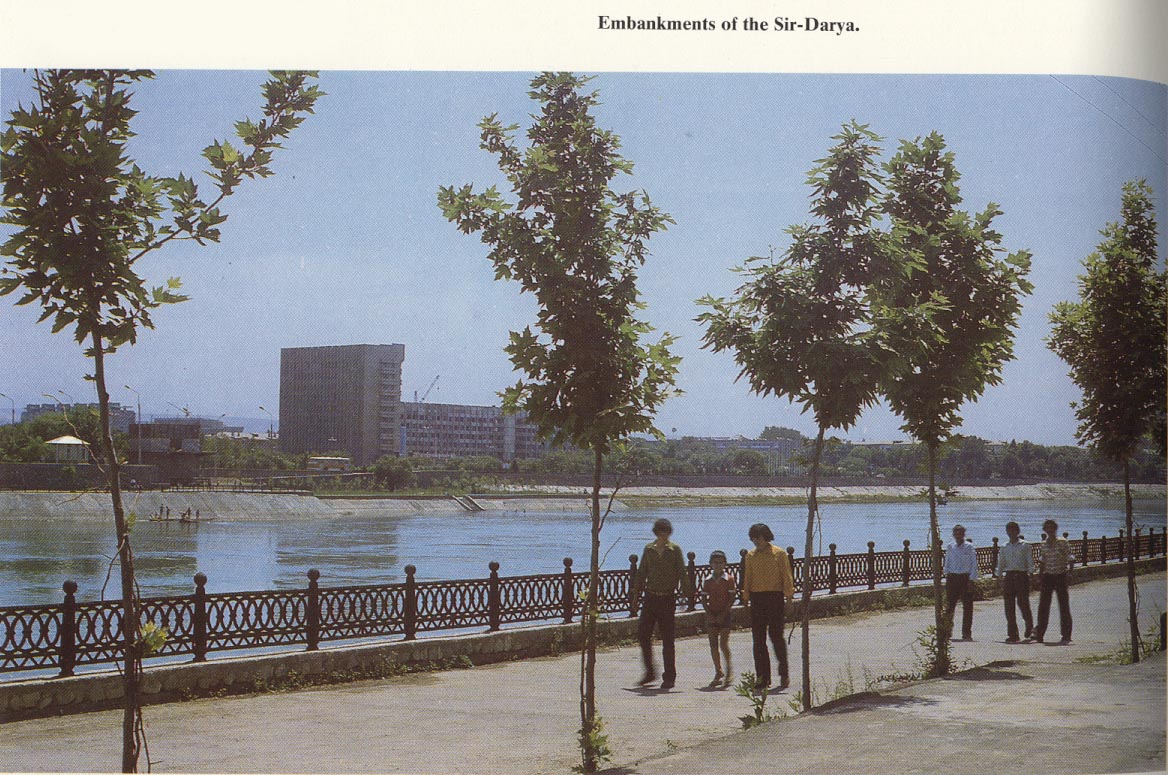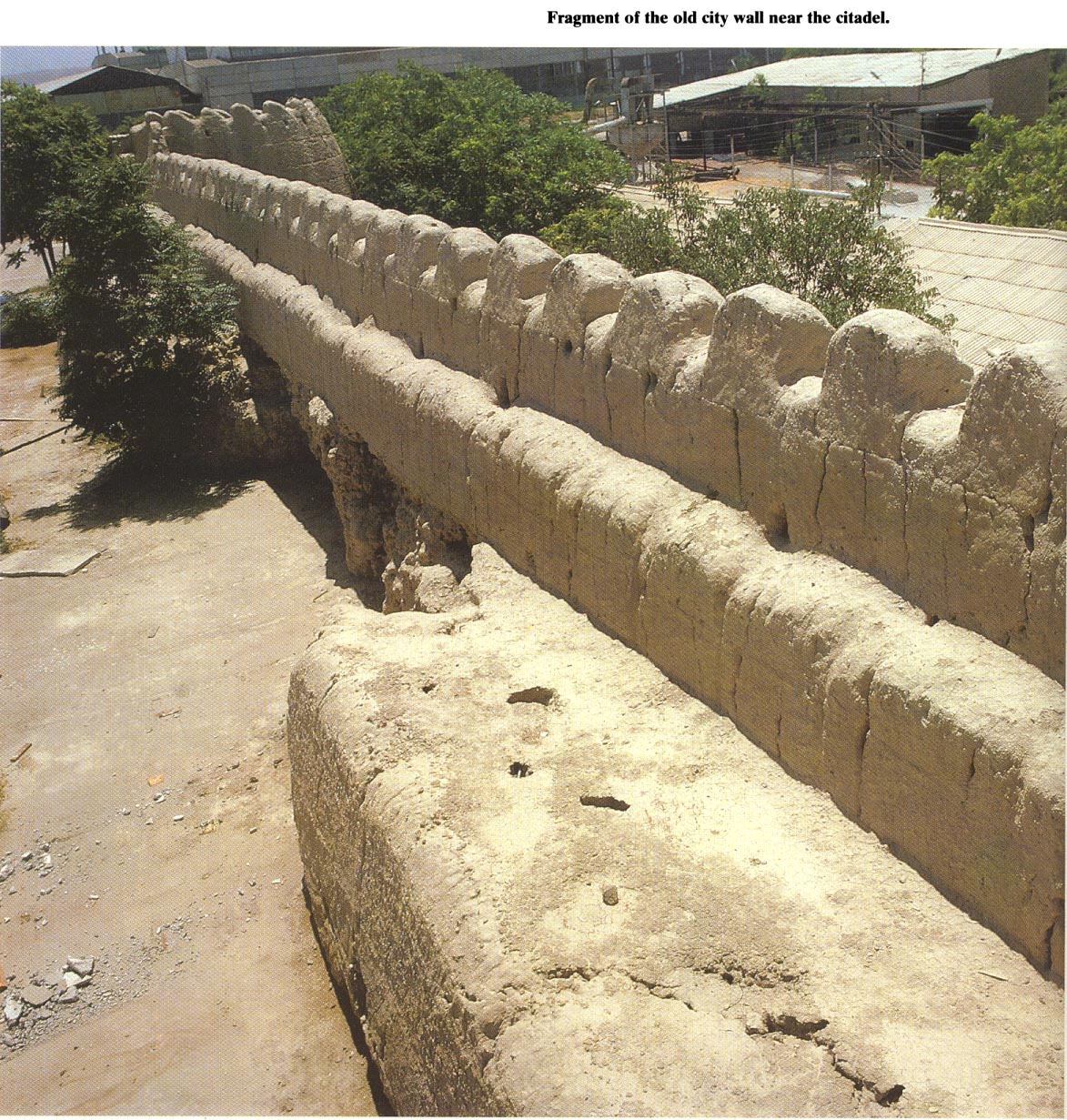Dushanbe
(The Capital)
Isfara
Istravshan
Panjikent
Xoroq (Khoroq)
Khojand History
Tajik people
Tajikistan History
Travel
Weather

Due to its climate and beneficial geographical position the Fergana Valley where the city lies is called "the pearl of Central Asia". Its green mountainous countryside and clean air, the running waters of the Sir-Darya as well as the abundance of fruit and grapes and other gifts of nature make it an ever young-park -city.
Khojand is home to one of ancient civilizations in central asia and beside Samarqand and Buchara is one of the major culture centers of Tajik people.
As the golden entrance to Ferghana Valley, Khojand enjoyed prosperity and its riches spawned palaces, grand mosques and a citadel before the Mongoles stearrollered the city into oblivion in the early 13th century.
Having more than 2500 years old of civilization, passing historical ups and downs, possessing a creative culture, Khojand has attained a very high status in Tajikistan's splendid history and civilization.
See map
Dialing Codes
Embassies
Language
Travel
Visa
Province: Khojand
Population: c. 165,000
Language: Persian (Tajik)
Area code: 3422 and 3455
Transportation: Daily flights from Dushanbe and Moscow and by coaches from Panjikent. More
Post: DHL Worldwide, 4th Floor, 122 Firdausi Street
Tel: 40617. More about
Accomodation:
*Hotel Leninabad, at the south bank of the river, near the bridge. Tel: 6-6927
*Hotel Merkury at ulitsa Filatov 2. Tel: 6-4990
Tour operator:"Mountain Travel and Central Asia tours"
Address: Shark street, Khojand
Phone: +992 (0)3422 4 38 41
E-Mail: adventrue@pamir-travel.com
Map: Road map
City map: Click here


*Remains of city citadel from 10th centuary surrounded in a pleasant park. You find it at the south bank of the river, 200 meters western the bridge, along the river.
* The mosque , madrase and mausoleum of shejk Masaladin in the Old Town are worth seeing.
*Khojand historical museum.
*Khojand botanical garden
Established in 1985. With area of 6,6 ha , this garden is arranged within the limits of city. Botanic collections consist of more 300 species of plants.

*Theater house
*Promenad on the bank of the river in tow n
*Finishing inthe Syr Darya river is a pleasant local hobby.
Today Khojand remains a rather picturesque Central Asian town bearing characteristic features of both ancient and modern times styles of architecture, in everyday routine of urban life, in people's customs and dress. The old town was spared by time in some places.
They are, first of all, the remains of the citadel on the left bank of the Sir-Darya river an architectural and artistic monument which was built in early Middle Ages and used as a fortification work up to the beginning of the XX century .The citadel surrounded by clay walls with thick towers occupied the area of 64 thousand square metres.
The remains of the walls date back to the XVIII-XIX centuries.
The 30-year long archaeological excavations resulted in finding cultural layers of early urban fortifications dating back to the remains of the walls erected by the troops of Alexander the Great in the IV century B. C. The excavated household utensils of different epochs, armaments and samples of ancient building materials are being exhibited now in the halls of Museum of Regional Studies.


The old market square named "Corahai Mardon" ("Courageous Crossroads") survived mainly due to the partly preserved surroundings (the Mostiheddin Mausoleum architectural assemblage ) and to the efforts of artists and architects who have erected a new Market Complex in the traditional Eastern style.
Next to the Mausoleum there stands a XX century mosque with a 20-column hall and painted ceiling and although a twenty one meter high minaret of the XIX century. Local masters Mirzorahmat and Usto Mallabek took part in its construction.
*Ruins of ancient Penjikent , (some 1.5 km from the modern town of Penjikent) a major Sogdian town arose in the 5th century A.D. More about
*Panjikent-Khojand route is a fantastic scenic route through the high mountains, climbing in places to over 3500 meters.
* Samarqand (Samarkand) is the major cultural and industrial center of Tajik people (now in Uzbekistan) . A majestic and beautiful city, Samarkand is the city of legends . The city is situated in the blossoming Zerafshan Valley. Samarkand is part of a region that historically was known as Sogdia, and whose ethnically Iranian (Tajik) merchants for centuries seem to have played a key role in the commerce along the Silk Road. More about.


More about.

An unknown medieval author called Khojandi "the dwelling of the astronomical science stars" was born here.
In later years Khojand appeared to become the centre of different historical events. Ruined by the Arabs in the eighth century it strongly resisted the Mongol hordes five centuries later having thus provisionally stemmed their advance to the West.
The Bolshoviks never fully trusted this troublesome republic and during the 1930s almost all Tajiks in positions of influence within the government were replaced by stooges from Moscow.
Read more
